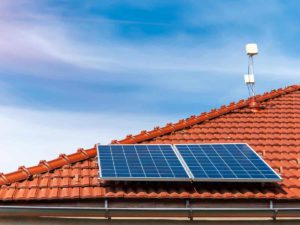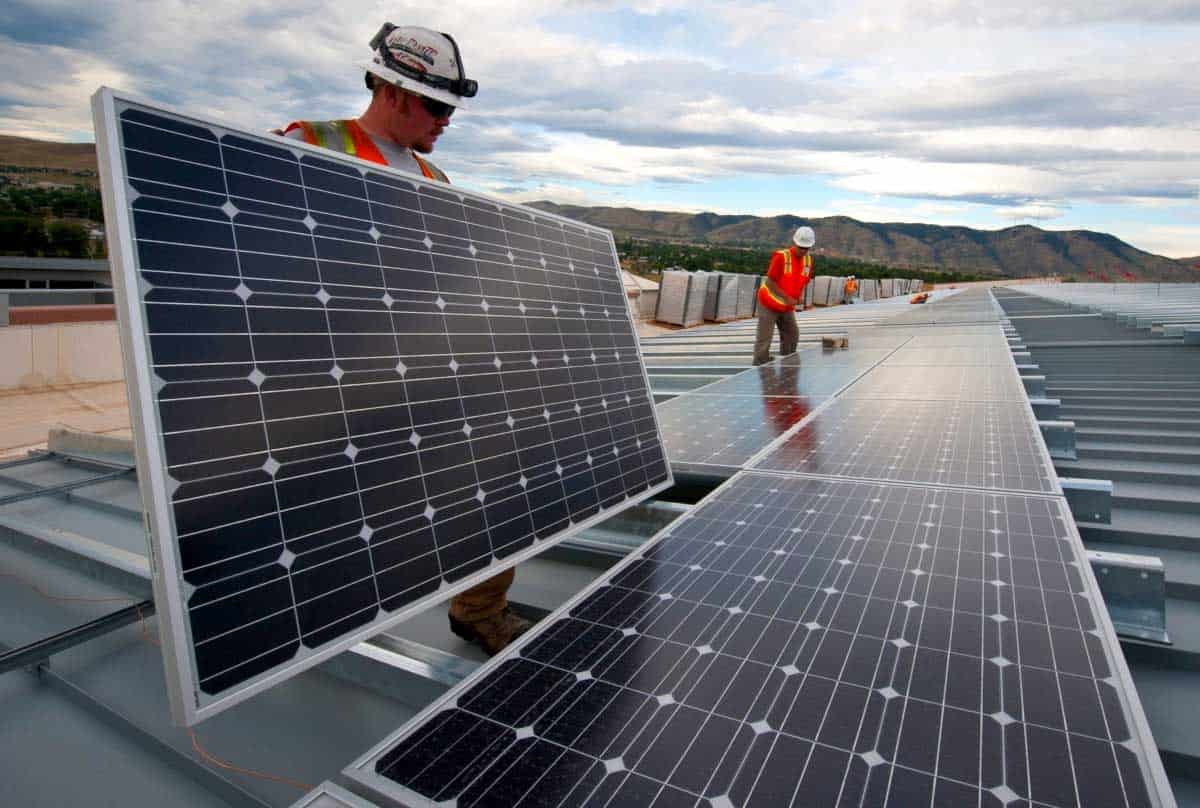At the end of the day, everyone is trying to make their own efforts in becoming more sustainable and making better choices for their household. One of the more popular ways to go green is integrating solar energy into their home, rather than pulling from the grid. There are numerous advantages to making this switch, with the environmental impact of solar energy leading the way.
Discover Energy Audits with Solar Energy and ONIT Home
Try our Free Energy Audit to make sure your home is performing at optimum energy efficiency. We’ll inspect every nook and cranny of your home to make sure it’s best serving your needs. We’ll also give you tips on lowering your energy bills, conserving energy, and creating a more efficient space. To learn more about how we can help you maintain a top performing home, visit us online to get started!
Nonrenewable Vs. Renewable Energy
But what is the leading reason for the environmental impact of solar energy? That boils down to using renewable energy, rather than utilizing nonrenewable energy. Let’s break down the differences between the two different forms of energy.
Nonrenewable Energy
With nonrenewable energy, it’s using sources of energy that will run out, or cannot be replenished within our lifetime. You may have heard of the term “fossil fuels.”
Fossil fuels are the source of energy that is nonrenewable, and often the leading source of air pollution. The most common sources of fossil fuels are coal, natural gas, and petroleum. The main element in those three sources is carbon, and according to National Geographic these fuels go back to the Carboniferous Period, roughly 300 to 360 million years ago. These fuels were formed through plants, algae, and plankton absorbing sunlight through photosynthesis. Once these plants died, the stored energy stayed within the organism under seabed, rocks, and sediment. This created high heat and pressure, creating an environment that turned the plant and animal remains into underground reservoirs filled with the nonrenewable sources of energy throughout the world.
Understanding the amount of years (hundreds of millions), that’s how the term nonrenewable comes in. The energy has the ability to naturally form again, but it isn’t going to be in our lifetime, or even our great, great, great grandchildren’s lifetime. These sources of energy take an incredible amount of time to populate.
Environmental Impact of Nonrenewable Energy
While extracting nonrenewable energy isn’t expensive, burning fossil fuels/nonrenewable energy is harmful for our environment. Whenever coal and oil are burned, there are particles that pollute the air, land, and water. While some of these particles are caught, most of them remain in the air, creating more atmospheric pollution. The combustion of fossil fuels creates carbon dioxide, creating the process called the greenhouse effect. The greenhouse effect is a leading cause of climate change, leaving our temperatures to rise at a rapid rate that organisms can’t adapt to quickly enough.

Renewable Energy
On the other side of things, we have renewable energy, or often referred to as “clean energy.” Renewable energy is a rapidly growing business. This business delivers on their promise of an environmentally clean future. There are a few different types of renewable energy! There’s solar energy, wind energy, thermal energy, and hydro energy. Just like the name, renewable energy comes from sources that are naturally occurring and consistently replenished.
Using renewable energy has taken away from the increased demand of fossil fuels and offered an alternative source with lower carbon emissions and less pollution.
So where does renewable energy come from?
Renewable energy comes from sources that naturally occur. Think of the sunlight, wind, and water. This isn’t a new form of energy, in fact it’s been around for a long time! There’s history of using windmills to generate electricity for grinding grain or using wind to power boats. Instead of using these natural resources, nonrenewable energy was used as a cheaper option.
How Renewable Energy Impacts the Environment
Using renewable energy to positively affect the environment works in a few different ways. A common phrase you’ll hear when discussing the environment is “carbon footprint.” A carbon footprint is the idea of how much greenhouse gases are generated due to several factors in our personal lives. Those facts include:
- Transportation means
- Electricity usage
- Lifestyle choices
- Diet choice
- Purchasing habits
- Amount of waste generated
- Where you live
- Type of home you live in
The average carbon footprint in the United States is 16 tons, while the global average is only four tons. Renewable energy sources lower your carbon footprint. This is because you’re using electricity generating through clean sources. This means they didn’t produce pollution or release carbon emissions.
Going green with renewable sources generates energy that doesn’t produce greenhouse gases, reduces dependence on fossil or imported fuels, and creates economic development through jobs in manufacturing, installation and more.

Solar Energy as a Renewable Energy Source
Now that you’ve seen the difference between renewable and nonrenewable energy, we can shift our focus into how solar energy is renewable and sustainable. The sun is the most abundant and renewable energy source that we know of. In fact, using just 0.1% of the sun’s energy has enough power to fully sustain the Earth for one day.
This is a clean and inexpensive way to create a renewable power source that is available nearly everywhere across the globe. All you need is direct sunlight to generate solar power. Knowing that this form of energy comes directly from the sun, we can use it as an inexhaustible source of energy, generating from a resource that is already heating the Earth. There are no excess measures that we are taking from the sun, but rather finding a way to engineer energy from a renewable source. Remember, it took a substantial amount of time to create the fossil fuels that are depleting now, so switching to a renewable resource is optimal for our environmental impact.
Additionally, the time to go renewable has never been more appealing. With advancing technologies and a need for change, solar energy and other renewable energy sources are a competitive market, giving consumers an advantage that they’ve never had before.
How Does Solar Energy Work?
Back to the science book on this one. Let’s break this down simply. When the sun comes down onto a solar panel, the heat provides an energy source that can convert into electricity. This is done through a process called the photovoltaic effect. The photovoltaic effect only turns into usable energy when there is a solar power system in place to gather the energy and transform it. There are three key components to any solar energy system for it to work:
- Solar panels: these are the key to capturing the energy from the sun
- An inverter: this converts the sun’s energy into a format that powers your home and appliances.
- Racking: the mounting or foundation
On its own, these three components cannot store the energy that the panels are gathering. There are a couple different variations of what you do from there to keep the energy stored, and it’s all depending on where you live. If you have access to power lines from your home, then you don’t need to gather any additional equipment. However, if you live off the grid, you’re going to need two additional parts:
- Battery to store the energy that the panels generate
- Charge controller to control the rate for battery charge

Environmental Impact of Solar Energy: the Good and the Bad
Of course, the environmental impact of solar energy aren’t always going to be perfect. As mentioned, this clean energy source doesn’t provide any additional pollution or greenhouse gases to our environment. This is a great reality for the future to reduce our carbon footprint, lessen the atmospheric distress, and slow the pace of global warming.
However, there are some negative environmental impact of solar energy. But, it’s important to remember that these negatives are improvements that still need to be made to the industry, and not with the way that the energy is gathered or stored. According to GreenMatch, here are some potentially negative effects from solar energy.
First, there are solar power plants that are used to generate enough electricity for a large grid and for cities. However, by doing this, these facilities require a large amount of land. This could interfere with existing land and impact the wilderness or recreational areas. Additionally, it can affect the soil structure, compacting it and leading to an altered channel and a higher chance of erosion. The maintenance of solar panels is minimal, but they do need to stay clear. Therefore, these power plants might need water for cleaning the panels or cooling any turbine generators. This then uses a large amount of groundwater or surface water to keep the area clean. Another concern is the threat to birds. This is because large plants generate so much heat and light that birds are often killed trying to fly through the area.
The last major concern comes with the production of the panels. The panels are currently c with toxic chemicals and hard metals. While this doesn’t compare to the carbon emissions of coal, there is a concern over how to properly dispose of old panels without causing any metal leaching into the soil. These are issues that need to be addressed and fixed, but with more research comes better solutions and advancements.
Now Let’s Talk About Solar For Your Home
The biggest benefit to solar energy is the money that stays in your pocket. Having solar panels virtually eliminates your energy bills, raises your home value, and is a guilt-free reason to keep the AC low during hot summer days. Let ONIT take care of you and your home when you’re ready to make the switch to solar. Our team of experts are on standby to answer any questions you may have. Visit us online or give us a call today at 1-833-433-0331.
Interested in learning more about how solar solutions can benefit your home? Reach out to the professionals at ONIT for a personalized quote. ONIT’s expert team can help make your green energy goals a reality. And when you install a solar power system with ONIT Home, you can install a whole home water filtration system and smart security system for FREE with installation in two weeks. Contact us today at 1-833-433-0331 to learn how you can enjoy this special offer.



